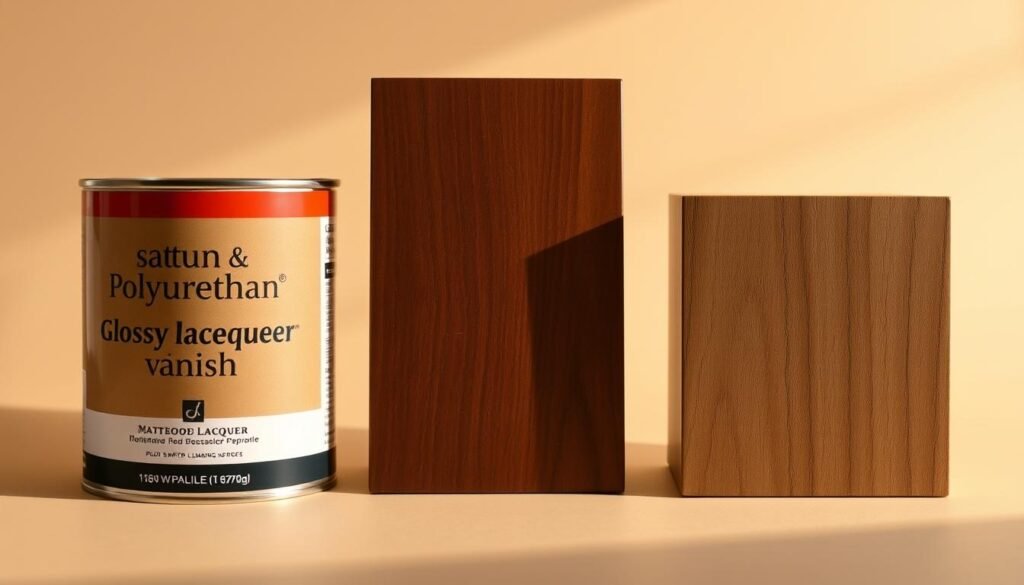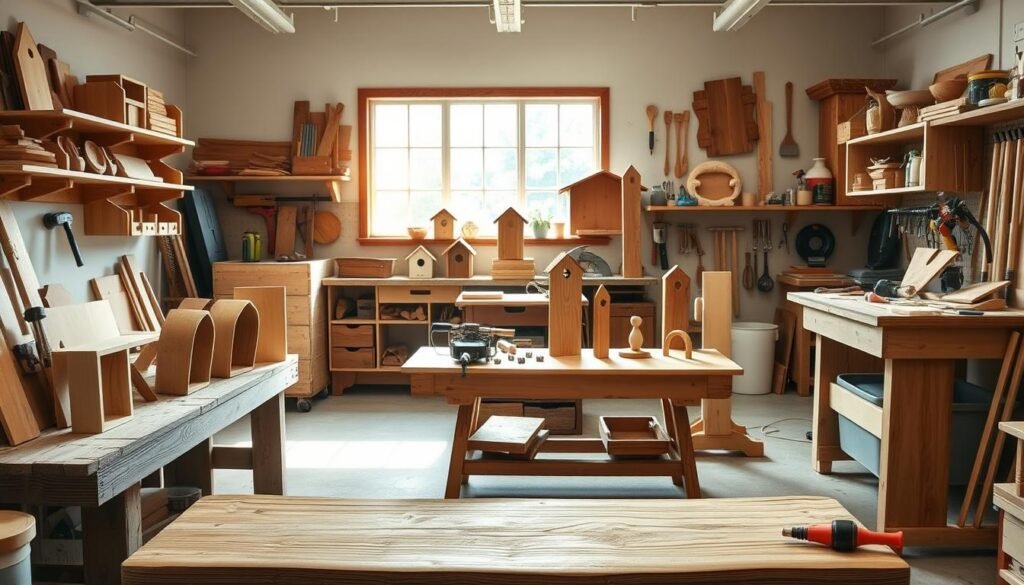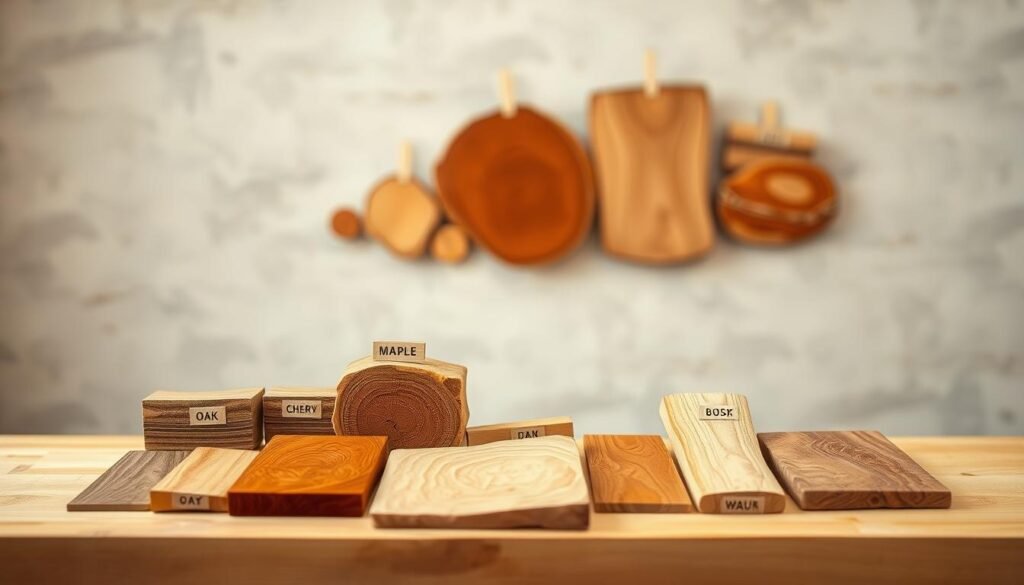Japanese joinery has been key in traditional Japanese woodworking for ages. It focuses on precision and skill. Now, modern builders are bringing back these ancient techniques in their work.
By mixing old Japanese carpentry with new woodworking, makers can build beautiful and strong structures. This mix of past and present makes unique, useful items. They honor history while meeting today’s building needs.
The Rich Heritage of Japanese Woodworking
Japanese woodworking has deep roots in ancient times. It combines function and beauty in a special way. This craft is key to Japanese architecture and culture, shaping the country’s heritage.
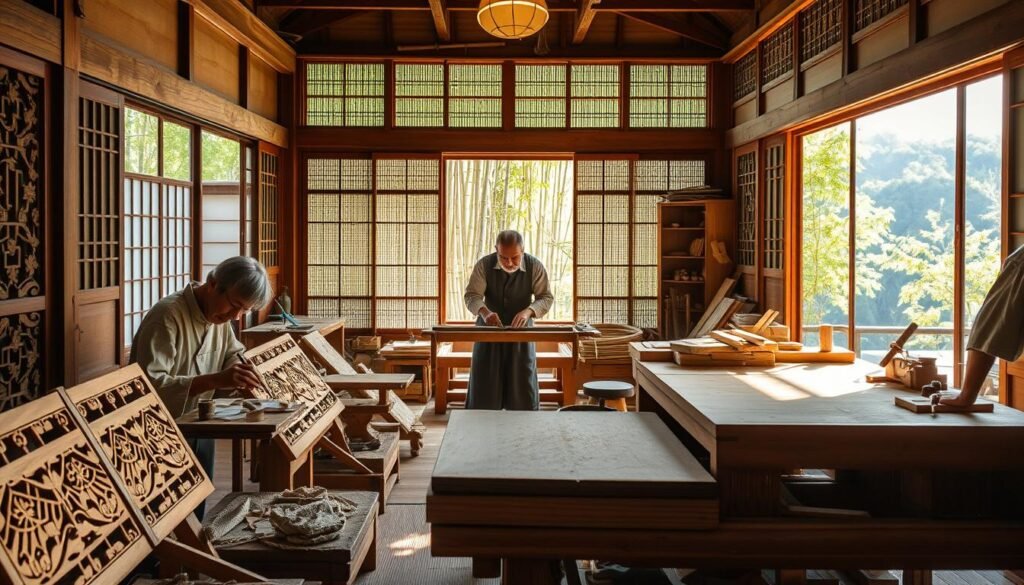
Over time, Japanese woodworking has grown and improved. Craftsmen have kept traditional methods alive while adapting to new times.
Evolution of Japanese Joinery Techniques
Japanese joinery has changed a lot over the years. It started with simple joints and now includes complex designs. This change shows how Japanese society and tastes have evolved, influenced by other cultures too.
The art of Japanese woodworking is more than just skills. It carries deep cultural and spiritual values. It shows respect for nature and a focus on sustainability, values we need today.
Japanese woodworking inspires woodworkers and fans worldwide. Its mix of old techniques and beauty is a treasure for those looking for unique projects.
The Basics of Japanese Joinery: Ancient Craft for Modern Builders
Modern builders are now using Japanese joinery, an old craft that values precision and skill. This craft, known for its detailed designs and strong joints, has been key in Japanese architecture for ages. It’s not just pretty; it also brings practical benefits to today’s building methods.
Japanese joinery uses interlocking joints that don’t need nails or glue. This method shows off the craftsman’s skill and adds strength to structures. The joints are made to handle different stresses, making them perfect for today’s buildings.
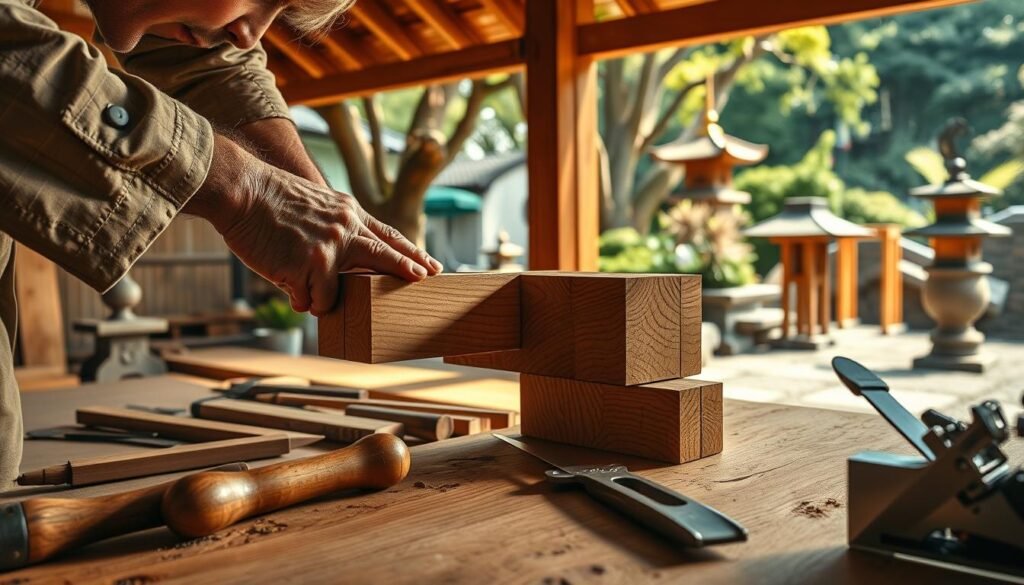
Kumiko patterns are a big part of Japanese joinery. Kumiko creates detailed wooden designs for panels or decorations. These designs are not just pretty; they show the craftsman’s dedication to quality.
Japanese carpentry values joinery deeply, passing down skills through the years. By learning Japanese joinery, modern builders can add timeless beauty and strength to their work.
Using Japanese joinery in modern building also supports green building. It helps reduce the need for metal fasteners and adhesives, making buildings more eco-friendly.
In summary, Japanese joinery is a treasure trove of knowledge for today’s builders. By adopting this ancient craft, builders can make structures that are not just stunning but also strong and green.
Essential Tools for Japanese Joinery
To master Japanese joinery, you need to know the key tools. This ancient craft is all about detailed joints and precision. Specialized tools play a big role in achieving this.
Traditional Japanese woodworking tools work with the wood, not against it. Chisels, for instance, are vital for making joints. They remove small wood pieces. Japanese chisels are known for their quality and are a must-have for woodworkers.
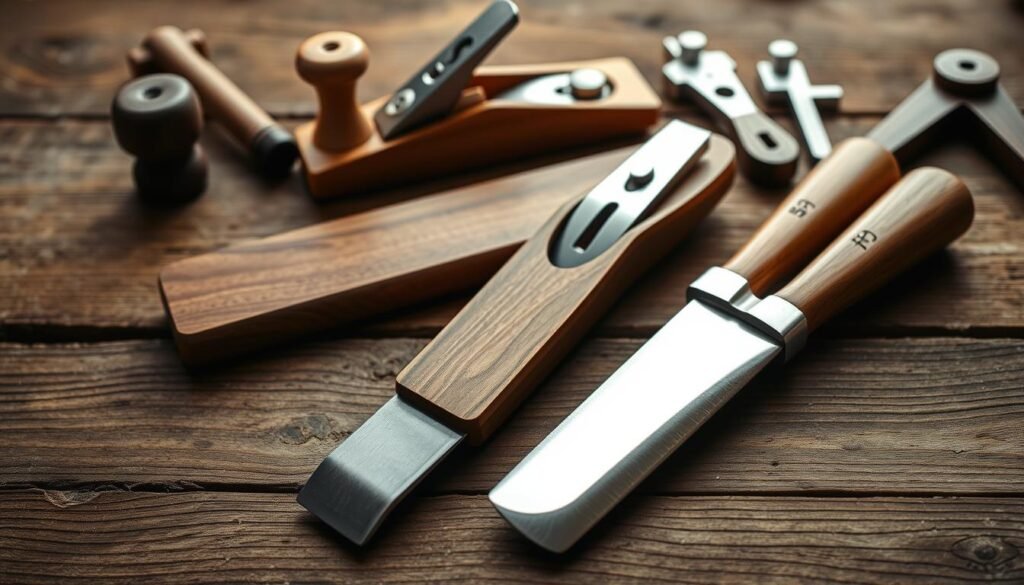
Modern tools also have a place in Japanese joinery. Special saws and marking gauges help with precise measurements. Choosing the right tool is important for the joinery’s quality.
Knowing how to use each tool is essential for mastering Japanese joinery. Whether using old or new tools, focus on precision and quality. This is what makes Japanese joinery special.
5 Fundamental Japanese Joints Every Woodworker Should Know
The art of Japanese joinery is based on key joints every woodworker should know. These joints have been used for centuries in Japanese woodworking. They are known for their strength and beauty.
The Dovetail joint is a famous Japanese wood joint. It has an interlocking design that makes it very strong. It’s often used in making drawers and cabinets.
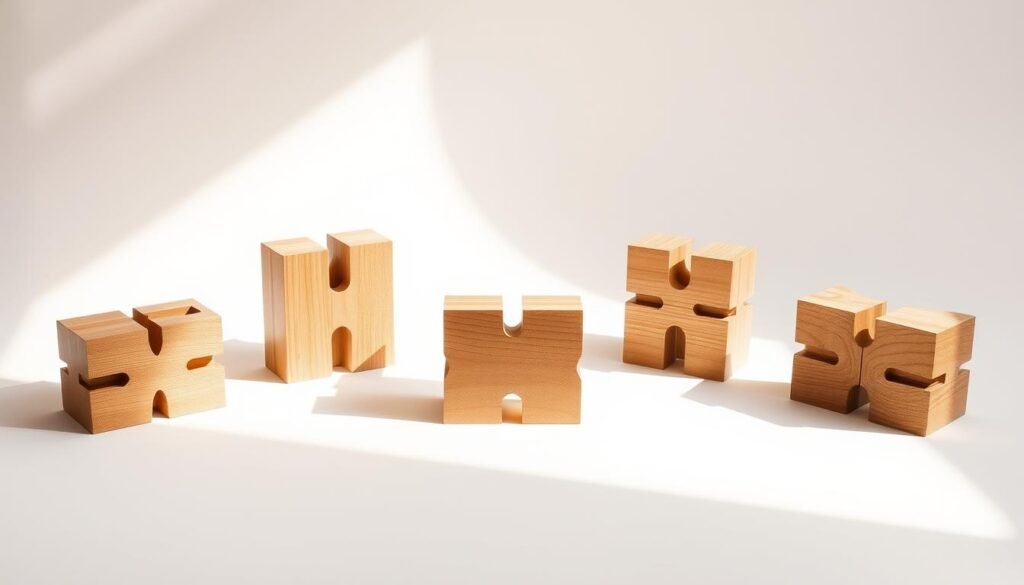
The Mortise and Tenon joint is also very important. It’s used in many things, like framing and furniture making. It has a tenon that fits into a mortise, making a strong connection.
The Dado joint is another key joint in Japanese woodworking. It involves cutting a groove in one piece of wood for another to fit into. This creates a strong and precise joint.
The Spline and Keyed joints are also basic in Japanese joinery. The Spline joint uses a thin piece of wood to strengthen a joint. The Keyed joint uses a wedge-shaped key to hold a tenon in place.
Applications of Japanese Joints in Modern Woodworking
These traditional Japanese joints are not just beautiful but also very useful. They are great for modern woodworking projects. Adding these joints to your work can bring traditional craftsmanship to your pieces.
Modern woodworkers can use these joints in many projects. They are perfect for making furniture and cabinets because of their strength and durability.
Learning and mastering these five fundamental Japanese joints can improve your woodworking skills. It can also open up new ways to be creative in your projects.
Advanced Japanese Joinery Techniques
The art of Japanese joinery goes beyond basic joints. Techniques like kumiko woodworking take woodwork design to new heights. Kumiko involves making detailed patterns with small wood pieces, a key feature of advanced Japanese joinery.
This method requires great precision and patience. The pieces are small, and the joints are almost invisible. It’s a challenging task.
Mastering these techniques means achieving high precision. It’s not just about the tools. Woodworkers must also understand how different woods behave. For kumiko furniture, selecting and preparing the wood is critical.
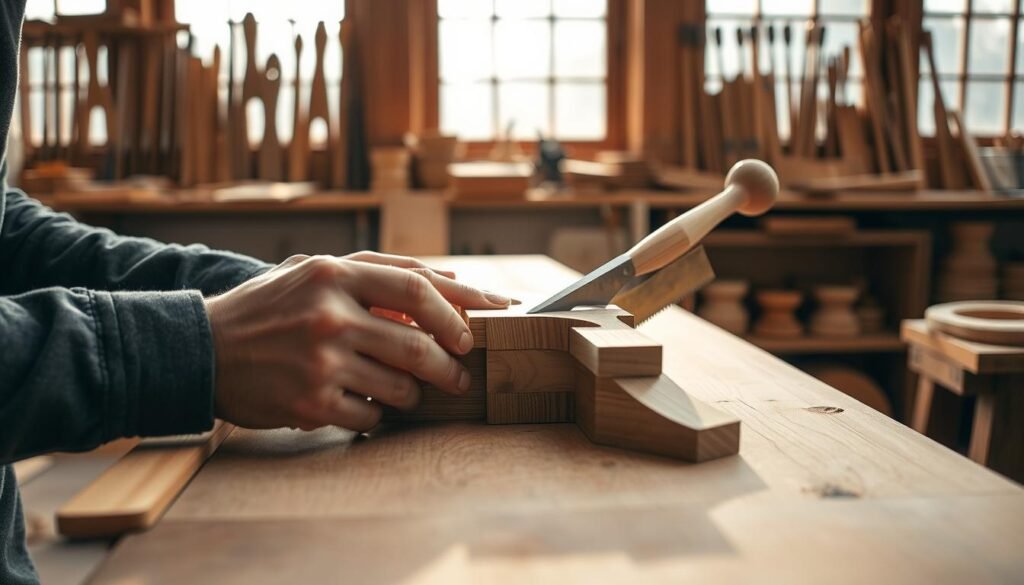
Japanese joinery isn’t just about kumiko. Other complex joints and designs also show its sophistication. These techniques help woodworkers create beautiful, functional pieces that are also art.
Learning these advanced techniques has big rewards. Woodworkers can make stunning Japanese furniture and deepen their understanding of woodworking as an art. So, these techniques are vital for any serious woodworker wanting to grow their skills.
The Art of Shou Sugi Ban: Charred Wood Finishing
Shou Sugi Ban, or “burnt cedar board,” is an ancient Japanese art. It’s now popular in modern design. This method burns the wood’s surface, making it strong and eye-catching.
This technique makes wood look better and last longer. It fights off rot, bugs, and weather. So, Shou Sugi Ban is key in making modern furniture that’s both lovely and long-lasting.
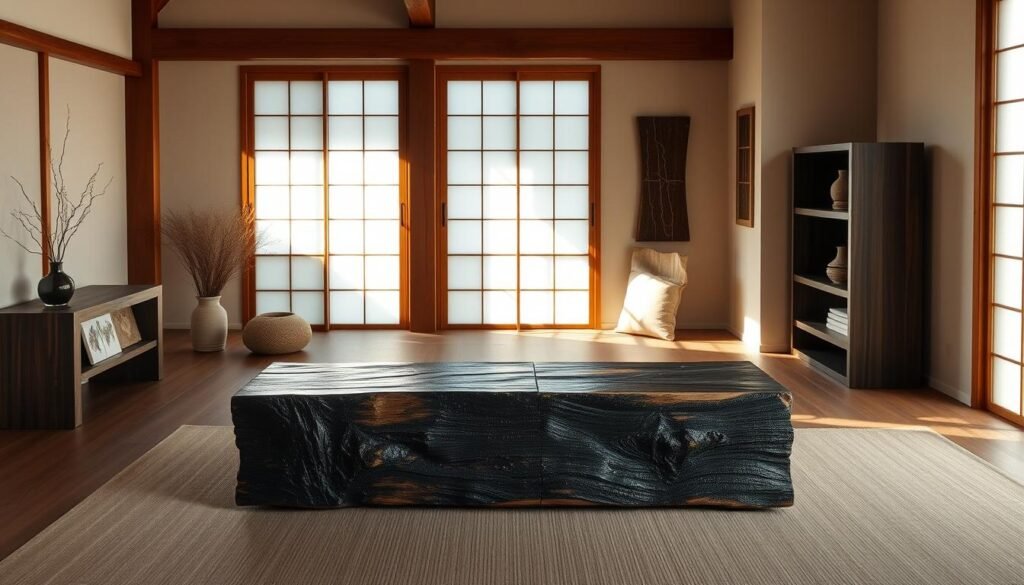
The burn gives wood a special, dark look. People love it for its unique beauty. It’s not just for furniture; it’s also used on houses for its toughness and easy care.
In short, Shou Sugi Ban mixes old Japanese skills with new design. It offers a stylish, sustainable finish that’s perfect for today’s homes.
3 Beginner-Friendly Japanese Joinery Projects
Japanese joinery is perfect for beginners. It focuses on precision and simplicity. Starting with simple projects helps build skills and confidence.
A basic wooden shelf is a great place to start. It needs just a few materials and simple joinery. Cut your wood, then use a Japanese joint like “hozo” or “dovetail” to put it together.
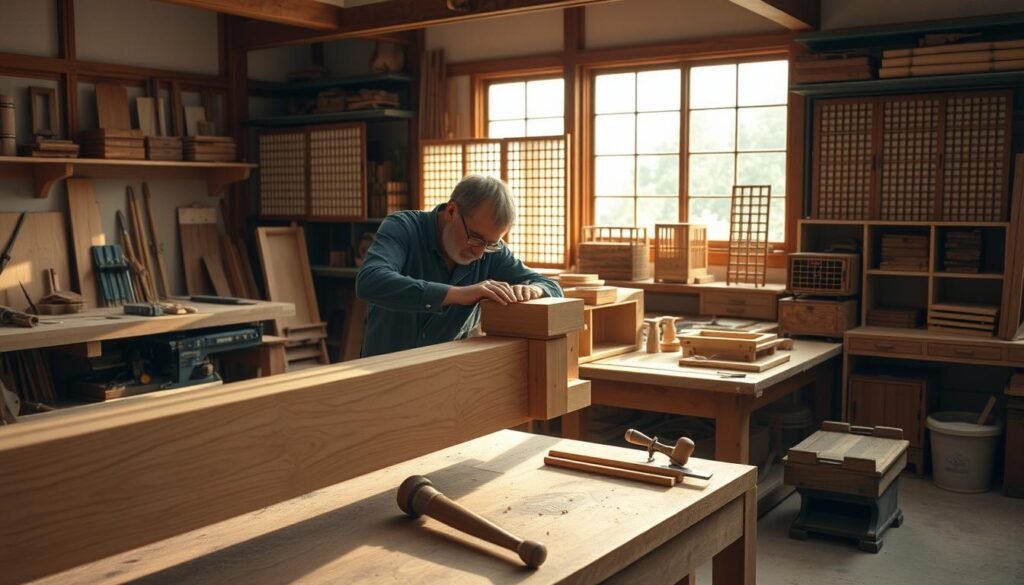
Building a wooden picture frame is another easy project. It lets you practice joinery on a small scale. You can use different woods and try various joints, like “kanawa tsugi” or “keyed tenon.”
For a more challenging project, try making a simple wooden box. It requires more complex joinery. You can add detailed designs or keep it simple, based on your taste.
These projects teach you the basics of Japanese joinery. They also prepare you for more complex projects. As you get better, you can tackle more detailed designs and techniques.
Starting with these projects will help you make beautiful pieces for your home. Whether you’re new to woodworking or have experience, Japanese joinery offers endless creative possibilities.
Sustainability and Environmental Benefits of Japanese Joinery
Japanese joinery focuses on natural materials and less waste. It’s a top example of green building. This ancient woodworking art has been perfected over centuries, aiming for sustainability and nature harmony.
It’s great for the environment because it uses materials wisely. Japanese craftsmen cut wood with precision and use special joints. This way, they use every bit of wood, making the project look better and waste less.
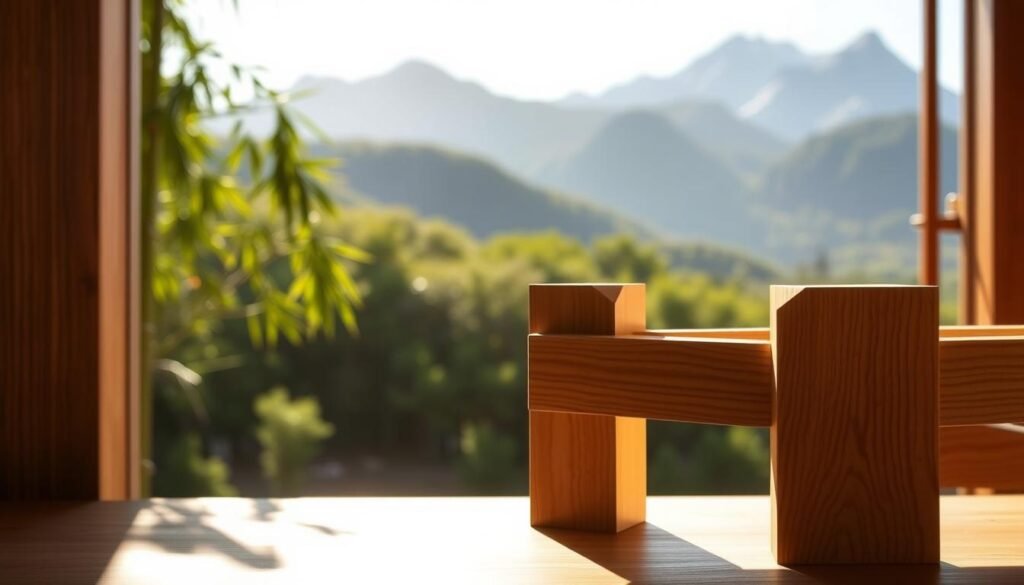
Also, Japanese joinery uses wood from local, sustainable sources. This choice cuts down on carbon emissions. It shows Japanese joinery’s dedication to being green, appealing to those who care about the planet.
Using Japanese joinery in today’s building can make construction greener. As we move towards greener ways, Japanese joinery teaches us to waste less and build more sustainably.
Learning Resources for Japanese Joinery Enthuisiasts
To master Japanese joinery, you can use many learning resources. You can find books, online tutorials, and workshops. These help deepen your understanding and skills.
For those who like reading, there are many woodworking books on Japanese joinery. These books have detailed diagrams and step-by-step guides for making complex joints.
Online tutorials are another great way to learn. Websites and YouTube channels often have videos on Japanese joinery. They cover both simple and advanced techniques.
Workshops and classes offer hands-on learning. You can practice Japanese joinery with the help of experienced craftsmen. These sessions are great for learning practical skills and understanding different joints.
Woodworking plans and patterns are also available online or in magazines. They help you practice on specific projects. You can build traditional Japanese furniture or create decorative items.
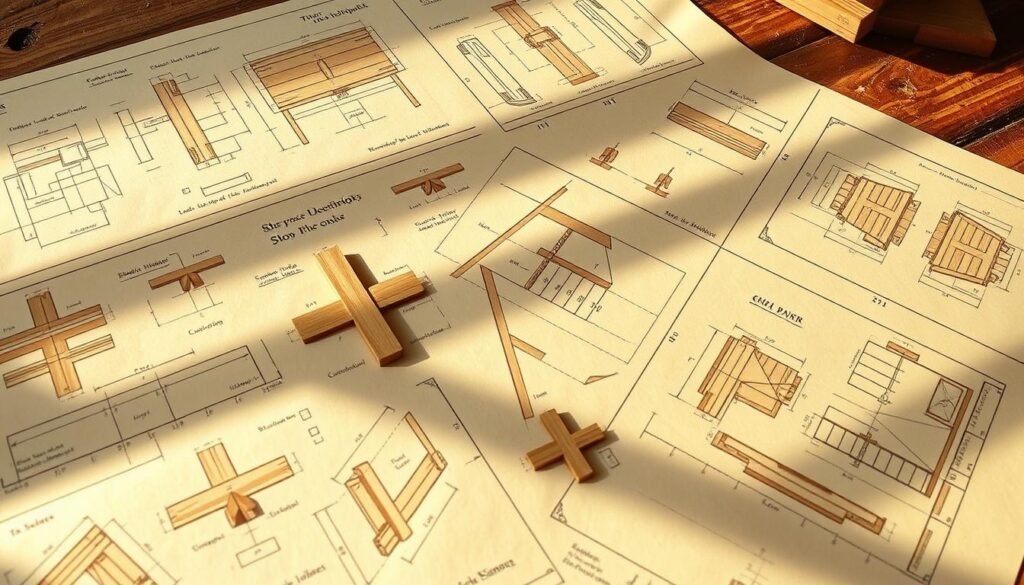
By using these resources, you can improve your Japanese joinery skills. You’ll become a skilled craftsman.
Conclusion: Honoring Tradition in Modern Woodworking
Exploring Japanese joinery shows us its value in modern woodworking. It teaches us to make pieces that are both useful and beautiful. These pieces are also good for the environment.
Techniques like Shou Sugi Ban connect us deeply with our materials and nature. Using these methods in our work makes our creations stronger and more beautiful.
The art of Japanese joinery shows our ancestors’ skill and creativity. By keeping these traditions alive, we protect them for the future.
In short, Japanese joinery brings a special view to modern woodworking. It values quality, care for the planet, and the personal touch. Let’s keep learning from this tradition and use its timeless wisdom in our work.

